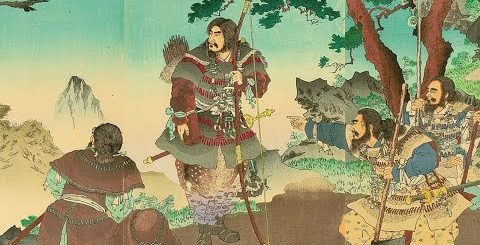El Salvador Documentary Film
El Salvador (Spanish: República de El Salvador, literally ‘Republic of The Savior’) is the smallest and the most densely populated country in Central America. The country’s capital city and largest city is San Salvador; Santa Ana and San Miguel are also important cultural and commercial centers in the country as well as Central America. El Salvador borders the Pacific Ocean on the west, and the countries of Guatemala to the north and Honduras to the east. Its easternmost region lies on the coast of the Gulf of Fonseca, opposite Nicaragua. As of 2009, El Salvador had a population of approximately 5,744,113 people, composed predominantly of Mestizos.
The colón was the official currency of El Salvador from 1892 to 2001, when it adopted the U.S. Dollar.
In 2010 El Salvador ranked in the top 10 among Latin American countries in terms of the Human Development Index and in the top 3 in Central America (behind Costa Rica and Panama), due in part to ongoing rapid industrialization. In addition, tropical forests and overall forest cover has expanded by nearly 20 percent from the year 1992 to 2010, making it one of the few countries experiencing reforestation.
In October 1979 a coup d’état brought the Revolutionary Government Junta of El Salvador to power. It nationalized many private companies and took over much privately owned land. The purpose of this new junta was to stop the revolutionary movement already underway in response to Duarte’s stolen election. Nevertheless, the oligarchy opposed agrarian reform, and a junta formed with young liberal elements from the army such as Gen. Majano and Gen. Gutierrez, as well as with progressives such as Ungo and Alvarez.
Owing to pressure from the oligarchy, this junta was soon dissolved because of its inability to control the army in its repression of the people fighting for unionization rights, agrarian reform, better wages, accessible health care and freedom of expression. In the meantime, the guerrilla movement was spreading to all sectors of Salvadoran society. Middle and high school students were organized in MERS (Movimiento Estudiantil Revolucionario de Secundaria, Revolutionary Movement of Secondary Students); college students were involved with AGEUS (Asociacion de Estudiantes Universitarios Salvadorenos; Association of Salvadoran College Students); and workers were organized in BPR (Bloque Popular Revolucionario, Popular Revolutionary Block).
The U.S. supported and financed the creation of a second junta to change the political environment and stop the spread of a leftist insurrection. Napoleon Duarte was recalled from his exile in Venezuela to head this new junta. However, a revolution was already underway and his new role as head of the junta was seen by the general population as opportunistic. He was unable to influence the outcome of the insurrection, and this resulted in the Salvadoran Civil War (1980–1992).
On January 16, 1992, the government of El Salvador, represented by president Alfredo Cristiani, and the Frente Farabundo Martí para la Liberación Nacional (FMLN), represented by the commanders of the five guerrilla groups — Shafick Handal, Joaquin Villalobos, Salvador Sánchez Ceren, Francisco Jovel and Eduardo Sancho, all signed the peace agreements brokered by the United Nations which ended the 12-year civil war. This event, held at the Chapultepec Castle in Mexico, was attended by U.N. dignitaries and other representatives of the international community. After signing the armistice, the president stood up and shook hands with all the now ex-guerrilla commanders, an action which was widely admired. The so-called Mexico Peace Agreements mandated reductions in the size of the army, and the dissolution of the National Police, the Treasury Police, the National Guard and the Civilian Defense, a paramilitary group. A new Civil Police was to be organized. Judicial immunity for crimes committed by the armed forces ended; the government agreed to submit to the recommendations of a Commission on the Truth for El Salvador (Comisión de la Verdad Para El Salvador), which would “investigate serious acts of violence occurring since 1980, and the nature and effects of the violence, and…recommend methods of promoting national reconciliation.”
http://en.wikipedia.org/wiki/El_salvador



